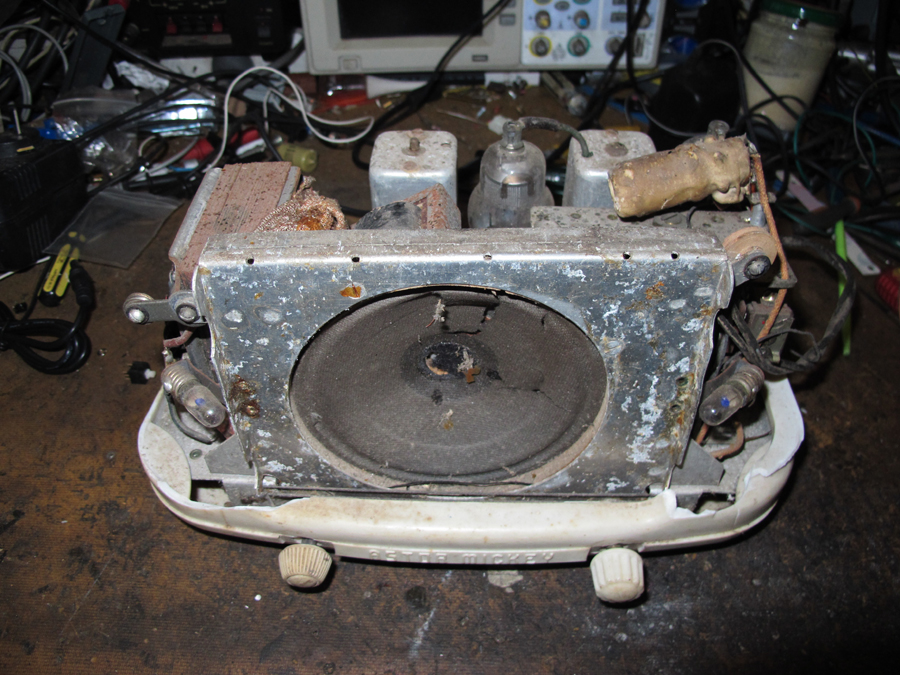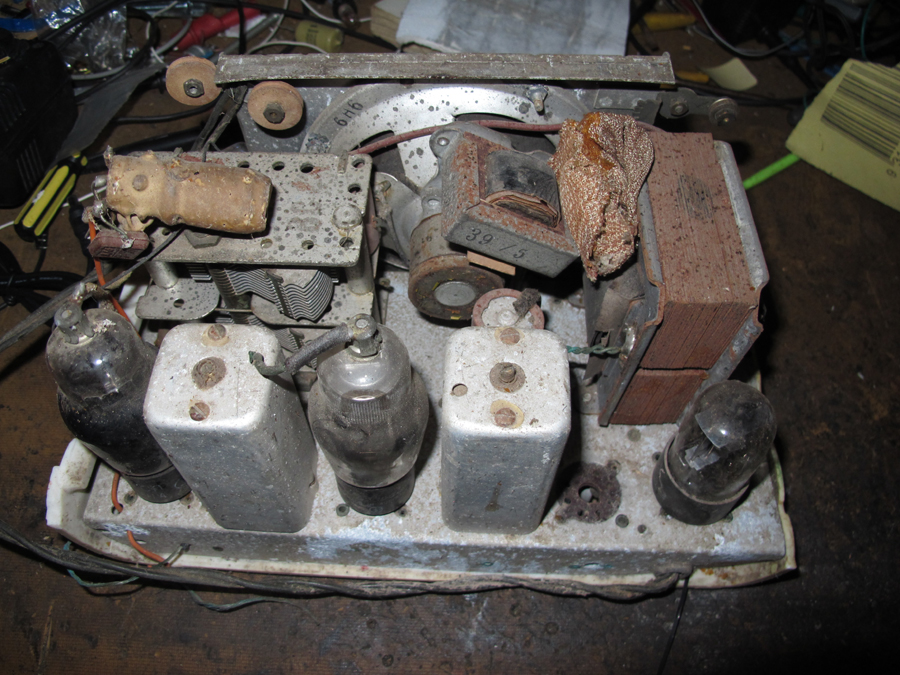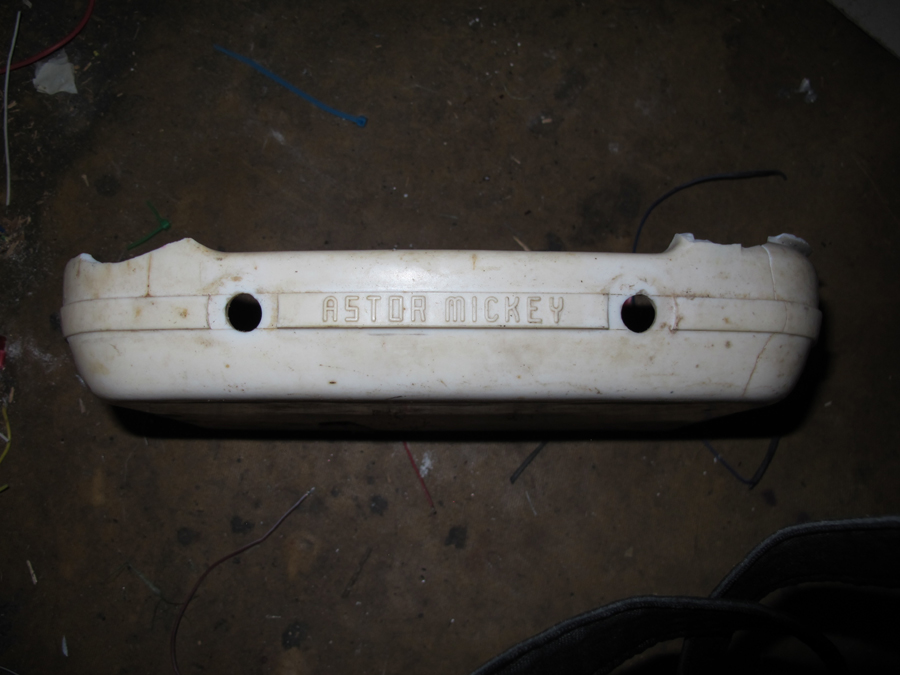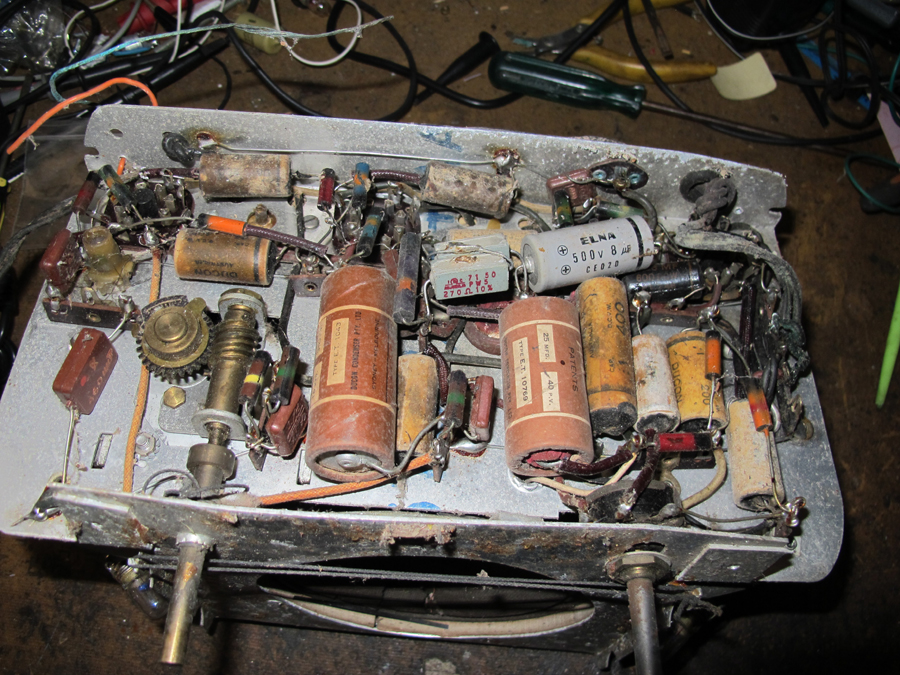Special Projects
Forum home - Go back to Special Projects
|
An Astor Mickey to restore
|
|
|
Return to top of page · Post #: 1 · Written at 1:16:35 PM on 3 April 2020.
|
|
|
|
Location: Toongabbie, NSW
Member since 19 November 2015 Member #: 1828 Postcount: 1387 |
|
This has not arrived yet, but I impulse bought it from eBay. |
|
|
Return to top of page · Post #: 2 · Written at 11:37:15 AM on 7 April 2020.
|
|
|
|
Location: Toongabbie, NSW
Member since 19 November 2015 Member #: 1828 Postcount: 1387 |
|
Well here we go, the Astor Mickey arrived well packed and absolutely untouched.     |
|
|
Return to top of page · Post #: 3 · Written at 4:04:11 PM on 7 April 2020.
|
|
|
|
Location: Sydney, NSW
Member since 28 January 2011 Member #: 823 Postcount: 6905 |
|
1939 is feasible. The 6K8 seems to be at odds with an Astor. The 6X5 dates from 1936. |
|
|
Return to top of page · Post #: 4 · Written at 4:16:49 PM on 7 April 2020.
|
|
|
|
Location: Belrose, NSW
Member since 31 December 2015 Member #: 1844 Postcount: 2669 |
|
I think the 6K8 should be a 6G8 or 6B8 maybe. |
|
|
Return to top of page · Post #: 5 · Written at 5:21:59 PM on 7 April 2020.
|
|
|
|
Location: Toongabbie, NSW
Member since 19 November 2015 Member #: 1828 Postcount: 1387 |
|
Hi Ian, rather like the white one picture 5 counting down the thumbnail columns and the layout is like picture 7. |
|
|
Return to top of page · Post #: 6 · Written at 7:45:58 PM on 7 April 2020.
|
|
|
|
Administrator
Location: Naremburn, NSW
Member since 15 November 2005 Member #: 1 Postcount: 7582 |
|
Photos uploaded to Post 2. ‾‾‾‾‾‾‾‾‾‾‾‾‾‾‾‾‾‾‾‾‾‾‾‾‾‾‾‾‾‾‾‾‾‾‾‾‾‾‾‾‾‾‾‾‾‾‾‾‾‾‾‾‾‾‾‾‾‾‾‾‾‾‾‾‾‾‾‾ A valve a day keeps the transistor away... |
|
|
Return to top of page · Post #: 7 · Written at 9:04:18 PM on 7 April 2020.
|
|
|
|
Location: Wangaratta, VIC
Member since 21 February 2009 Member #: 438 Postcount: 5659 |
|
I have an STC here that uses 6K8 (Triode Hexode) and a BC-221-N Frequency meter same and I am currently running a 6J8 (Triode Heptode) in the STC. Whist it may not give the same result I have often found one in the others spot .TC is grid 1 Heptode on 6J8 and 6K8 g3 Hexode. It was put there to see if there was a dud 6K8. |
|
|
Return to top of page · Post #: 8 · Written at 10:25:12 PM on 7 April 2020.
|
|
|
|
Location: Belrose, NSW
Member since 31 December 2015 Member #: 1844 Postcount: 2669 |
|
Looks like it's a KM from 1948. |
|
|
Return to top of page · Post #: 9 · Written at 10:29:54 PM on 7 April 2020.
|
|
|
|
Location: Sydney, NSW
Member since 28 January 2011 Member #: 823 Postcount: 6905 |
|
Now that I see the case remnant, I'm going to guess it's model KM with 6X5 from 1947, whose line-up was: 6A8G or 6J8G, 6B8G or 6G8G, 6V6GT, 6X5GT (No mention of a 6K8).
https://www.radiomuseum.org/r/astor_mickey_km_with_6x5gt_rectifier.html |
|
|
Return to top of page · Post #: 10 · Written at 10:46:09 PM on 7 April 2020.
|
|
|
|
Location: Belrose, NSW
Member since 31 December 2015 Member #: 1844 Postcount: 2669 |
|
On the last page of the PDF I linked to it has a service bulletin about just that - the replacement of the 5Y3 with the 6X5. |
|
|
Return to top of page · Post #: 11 · Written at 10:18:13 AM on 8 April 2020.
|
|
|
|
Location: Toongabbie, NSW
Member since 19 November 2015 Member #: 1828 Postcount: 1387 |
|
Thanks guys, looks like a 1947 KM-1 for sure. |
|
|
Return to top of page · Post #: 12 · Written at 11:07:50 AM on 8 April 2020.
|
|
|
|
Location: Belrose, NSW
Member since 31 December 2015 Member #: 1844 Postcount: 2669 |
|
Well obviously sheet steel was in short supply (busy making cars?) but there would have been a lot of war surplus aluminium sheet around at that time. |
|
|
Return to top of page · Post #: 13 · Written at 1:04:28 PM on 9 April 2020.
|
|
|
|
Location: Toongabbie, NSW
Member since 19 November 2015 Member #: 1828 Postcount: 1387 |
|
While I was cleaning down the chassis I uncovered a part number stamped on the rear covered by what was an artsnp label. |
|
|
Return to top of page · Post #: 14 · Written at 12:41:44 PM on 10 April 2020.
|
|
|
|
Location: Toongabbie, NSW
Member since 19 November 2015 Member #: 1828 Postcount: 1387 |
|
OK a tech question: |
|
|
Return to top of page · Post #: 15 · Written at 1:25:41 PM on 10 April 2020.
|
|
|
|
Location: Belrose, NSW
Member since 31 December 2015 Member #: 1844 Postcount: 2669 |
|
I don't recall ever seeing an Astor with a painted or plated chassis, if steel, it was zinc coated sheet, punched and bent. |
|
|
You need to be a member to post comments on this forum.
|
|

Sign In

Vintage Radio and Television is proudly brought to you by an era where things were built with pride and made to last.
DISCLAIMER: Valve radios and televisions contain voltages that can deliver lethal shocks. You should not attempt to work on a valve radio or other electrical appliances unless you know exactly what you are doing and have gained some experience with electronics and working around high voltages. The owner, administrators and staff of Vintage Radio & Television will accept no liability for any damage, injury or loss of life that comes as a result of your use or mis-use of information on this website. Please read our Safety Warning before using this website.
WARNING: Under no circumstances should you ever apply power to a vintage radio, television or other electrical appliance you have acquired without first having it checked and serviced by an experienced person. Also, at no time should any appliance be connected to an electricity supply if the power cord is damaged. If in doubt, do not apply power.
Shintara - Keepin' It Real · VileSilencer - Maintain The Rage
